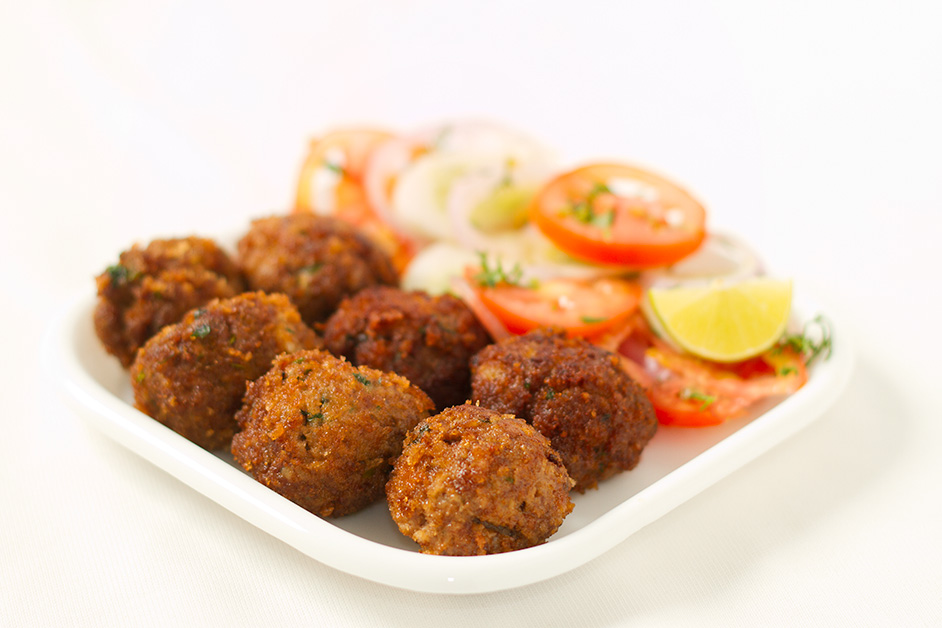Parsi Mutton Kebabs
2015-06-12- Cuisine: Indian
- Course: Side Dishes, Snacks
- Skill Level: Intermediate
- Yield : 500 gms
- Servings : 5-6
- Prep Time : 20m
- Cook Time : 25m
- Ready In : 45m
The Melt in mouth Parsi Mutton Kebabs
While every Parsi household has their own way of cooking delicacies, there is one thing common – it’s their love and respect for food, which makes it taste heavenly.
Parsi Mutton Kebabs are typically served as starters to the Dhansak Meals typically on a lazy weekend afternoon. But I can make and eat them with any meal and I am sure so will you because making them is so very easy.
Tips
Don’t forget to add potatoes to the mince meat. Potatoes bind the meat and make the kebabs soft and succulent.
Trivia about Kebabs
Kabab, of which there are several distinct Persian varieties, is a national dish of Iran. Kebab may be served with either steamed, saffroned basmati or Persian rice or with Persian naan. Iran has more than seven types of kebab, which form a significant part of the Iranian diet.
It is served with the basic Iranian meal accompaniments, in addition to grilled tomatoes on the side of the rice and butter on top of the rice. It is an old northern tradition (probably originating in Tehran) that a raw egg yolk should be placed on top of the rice as well, though this is strictly optional, and most restaurants will not serve the rice this way unless it is specifically requested. “Somagh”, powdered sumac, is also made available and its use varies based on tastes to a small dash on the rice or a heavy sprinkling on both rice and meat, particularly when used with red (beef/veal/lamb) meat.
At Persian restaurants, the combination of one kabab barg and one kabab koobideh is typically called Soltani, meaning “sultan’s feast”. The traditional beverage of choice to accompany kebab is doogh, a sour yogurt drink with mint and salt.
In the old bazaar tradition, the rice (which is covered with a tin lid) and accompaniments are served first, immediately followed by the kebabs, which are brought to the table by the waiter, who holds several skewers in his left hand, and a piece of flat bread (typically nan-e lavash) in his right. A skewer is placed directly on the rice and while holding the kebab down on the rice with the bread, the skewer is quickly pulled out. With the two most common kebabs, barg and koobideh, two skewers are always served. In general, bazaar kebab restaurants only serve these two varieties, though there are exceptions.
Source: Wikipedia
Ingredients
- Minced meat 500 gms (mutton Keema)
- Ginger 1 Tbsp (grated)
- Garlic 1 Tbsp (crushed)
- Green Chilies 2 (deseeded and chopped finely)
- Turmeric 1/2 Tsp
- Clove 5
- Cinnamon 1/2" stick
- Potatoes 1 (Boiled, peeled and mashed)
- Mint leaves 1 Tbsp chopped finely
- Coriander 3 Tbsp chopped finely
- Salt to taste
- Bread Crumbs to coat
- Eggs 3 whisked
- Oil for deep frying
Method
Step 1
Take all the keema in a plate or a wide bowl and mix it with hands for about 3-4 minutes.
Step 2
Use a mortar and pestle to powder clove and cinnamon.
Step 3
Add the following to the keema: grated ginger, crushed garlic, green chillies, potato, turmeric, red chili powder, clove-cinnamon powder, mint leaves, coriander leaves and salt. Mix well
Step 4
Use the palms of your hand to make medium sized round balls of the keema-masala mixture, arrange them in a tray and refrigerate for about 15-20 minutes (or till you are ready to fry them).
Step 5
Whisk the eggs.
Step 6
Coat the refrigerated cutlets in the egg mixture followed by breadcrumbs and deep fry in hot oil till they turn golden brown from all sides.
Serving Suggestions
Serve these delectable mutton kebabs piping hot along with kachumbar and a slice of lemon.
[mc4wp_form]






posted by Hema on October 14, 2020
Thanks Guys, Your Recipe Was Too Fantastic. Me and My Family Loved it. I Will Share your Rrecipe with my friends. Hope they will love it too.
posted by meher khan on October 5, 2015
Behad zaikedaar
posted by Swati Sani on October 5, 2015
Shukriya.